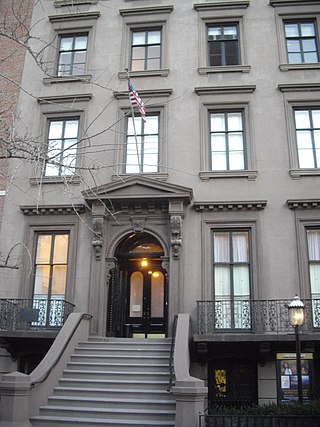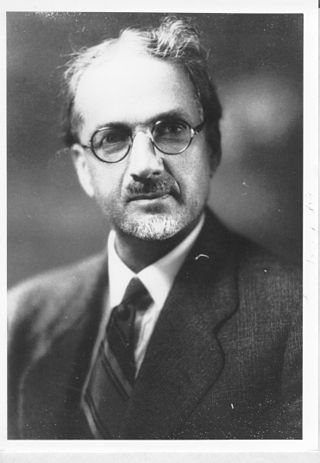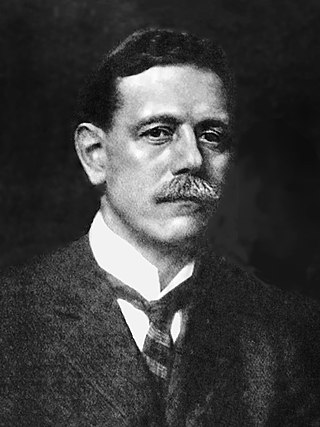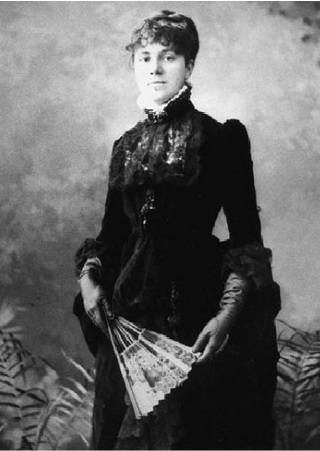
The Newberry Library is an independent research library, specializing in the humanities. It is located in Chicago, Illinois, and has been free and open to the public since 1887. The Newberry fosters a deeper understanding of our world by inspiring research and learning in the humanities and encouraging conversations about ideas that matter. Its mission is rooted in a growing and accessible collection of rare and historical materials.

The American Academy of Arts and Letters is a 300-member honor society whose goal is to "foster, assist, and sustain excellence" in American literature, music, and art. Its fixed number membership is elected for lifetime appointments. Its headquarters is in the Washington Heights neighborhood of Manhattan in New York City. It shares Audubon Terrace, a Beaux Arts/American Renaissance complex on Broadway between West 155th and 156th Streets, with the Hispanic Society of America and Boricua College.
Henry Forbes Bigelow was an American architect, best known for his work with the firm of Bigelow & Wadsworth in Boston, Massachusetts. He was noted as an architect of civic, commercial and domestic buildings. In an obituary, his contemporary William T. Aldrich wrote that "Mr. Bigelow probably contributed more to the creation of charming and distinguished house interiors than any one person of his time." Numerous buildings designed by Bigelow and his associates have been listed on the United States National Register of Historic Places (NRHP).

Hannibal Hamlin Garland was an American novelist, poet, essayist, short story writer, Georgist, and psychical researcher. He is best known for his fiction involving hard-working Midwestern farmers.

Henry Blake Fuller was an American novelist and short story writer. He was born and worked in Chicago, Illinois. He is perhaps the earliest novelist from Chicago to gain a national reputation. His exploration of city life was seen as revelatory, and later in his life he was perhaps the earliest established American author to explore homosexuality in fiction.

The DuSable Black History Museum and Education Center, formerly the DuSable Museum of African American History, is a museum in Chicago that is dedicated to the study and conservation of African-American history, culture, and art. It was founded in 1961 by Margaret Taylor-Burroughs, her husband Charles Burroughs, Gerard Lew, Eugene Feldman, Bernard Goss, Marian M. Hadley, and others. They established the museum to celebrate black culture, at the time overlooked by most museums and academic establishments. The museum has an affiliation with the Smithsonian Institution.

McKim, Mead & White was an American architectural firm based in New York City. The firm came to define architectural practice, urbanism, and the ideals of the American Renaissance in fin de siècle New York.
The American Conservatory of Music (ACM) was a major American school of music founded in Chicago in 1886 by John James Hattstaedt (1851–1931). The conservatory was incorporated as an Illinois non-profit corporation. It developed the Conservatory Symphony Orchestra and had numerous student recitals. The oldest private degree-granting music school in the Midwestern United States, it was located in Chicago until 1991.

The American Alliance of Museums (AAM), formerly the American Association of Museums, is a non-profit association whose goal is to bring museums together. Founded in 1906, the organization advocates for museums and provides "museum professionals with the resources, knowledge, inspiration, and connections they need to move the field forward."

The Eagle's Nest Art Colony, the site known in more modern times as the Lorado Taft Field Campus, was founded in 1898 by American sculptor Lorado Taft on the bluffs flanking the east bank of the Rock River, overlooking Oregon, Illinois. The colony was populated by Chicago artists, all members of the Chicago Art Institute or the University of Chicago art department, who gathered in Ogle County to escape the summer heat of Chicago. The colony complex has been used as a field campus for Northern Illinois University since 66 acres (27 ha) of Lowden State Park were turned over to the university by the state of Illinois.

The ten-story Fine Arts Building, formerly known as the Studebaker Building, is located at 410 S Michigan Avenue across from Grant Park in Chicago in the Chicago Landmark Historic Michigan Boulevard District. It was built for the Studebaker company in 1884–1885 by Solon Spencer Beman, and extensively remodeled in 1898, when Beman removed the building's eighth (top) story and added three new stories. Studebaker constructed the building as a carriage sales and service operation with manufacturing on upper floors. The two granite columns at the main entrance, 3 feet 8 inches (1.12 m) in diameter and 12 feet 10 inches (3.91 m) high, were said to be the largest polished monolithic shafts in the country. The interior features Art Nouveau motifs and murals by artists such as Martha Susan Baker, Frederic Clay Bartlett, Oliver Dennett Grover, Frank Xavier Leyendecker, and Bertha Sophia Menzler-Peyton dating from the 1898 renovation. In the early 20th century, the Kalo Shop and Wilro Shop, firms owned by women and specializing in Arts and Crafts items, were established in the Fine Arts Building.

Arts Club of Chicago is a private club and public exhibition space located in the Near North Side community area of Chicago, a block east of the Magnificent Mile, that exhibits international contemporary art. It was founded in 1916, inspired by the success of the Art Institute of Chicago's handling of the Armory Show. Its founding was viewed as a statement that art had become an important component of civilized urban life. The Arts Club is said to have been pro-Modernist from its founding. The Club strove to break new ground with its shows, rather than collect the works of established artists as the Art Institute does.

The Salmagundi Club, sometimes referred to as the Salmagundi Art Club, is a fine arts center founded in 1871 in the Greenwich Village section of Manhattan, New York City. Since 1917, it has been located at 47 Fifth Avenue. As of 2021, its membership roster totals roughly 1,250 members.

Albert Henry Krehbiel, was the most decorated American painter ever at the French Academy, winning the Prix De Rome, four gold medals and five cash prizes. He was born in Denmark, Iowa and taught, lived and worked for many years in Chicago. His masterpiece is the programme of eleven decorative wall and two ceiling paintings / murals for the Supreme and Appellate Court Rooms in Springfield, Illinois (1907–1911). Although educated as a realist in Paris, which is reflected in his neoclassical mural works, he is most famously known as an American Impressionist. Later in his career, Krehbiel experimented in a more modernist manner.
Henry Francis Regnery (1912–1996) was a conservative American publisher who founded the newspaper Human Events (1944) and the Henry Regnery Company (1947) and published Russell Kirk's classic work The Conservative Mind (1953).

Irving Kane Pond was an American architect, college athlete, and author. Born in Ann Arbor, Michigan, Pond attended the University of Michigan and received a degree in civil engineering in 1879. He was a member of the first University of Michigan football team and scored the first touchdown in the school's history in May 1879.
Pond and Pond was an American architecture firm established by the Chicago architects Irving Kane Pond and Allen Bartlitt Pond.
The Society of Midland Authors is an association of published authors from twelve American states: Illinois, Indiana, Iowa, Kansas, Michigan, Minnesota, Missouri, Nebraska, North Dakota, Ohio, South Dakota, and Wisconsin.

Emily Sartain was an American painter and engraver. She was the first woman in Europe and the United States to practice the art of mezzotint engraving, and the only woman to win a gold medal at the 1876 World Fair in Philadelphia. Sartain became a nationally recognized art educator and was the director of the Philadelphia School of Design for Women from 1866 to 1920. Her father, John Sartain, and three of her brothers, William, Henry and Samuel were artists. Before she entered the Pennsylvania Academy of the Fine Arts and studied abroad, her father took her on a Grand Tour of Europe. She helped found the New Century Club for working and professional women, and the professional women's art clubs, The Plastic Club and The Three Arts Club.

Ralph Elmer Clarkson was an American painter, known primarily for his portraits of public figures in and around Chicago.

















